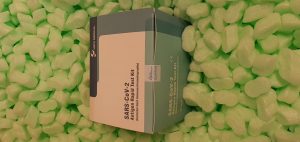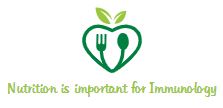Autoimmune ailments are characterised by a breakdown of immune tolerance partly on account of environmental components. The short-chain fatty acid acetate, derived largely from intestine microbial fermentation of dietary fiber, promotes anti-inflammatory regulatory T cells and protects mice from kind 1 diabetes, colitis and allergic reactions. Here, we present that the effects of acetate prolong to a different essential immune subset concerned in tolerance, the IL-10 producing regulatory B cells (B10 cells). Acetate instantly promoted B10 cell differentiation from mouse B1a cells each in vivo and in vitro.
These effects had been linked to metabolic modifications by way of the elevated manufacturing of acetyl-CoA, which fueled the tricarboxylic acid cycle and promoted post-translational lysine acetylation. Acetate additionally promoted B10 cells from human blood cell by way of related mechanisms. Finally, we recognized that dietary fiber supplementation in wholesome people was related with elevated blood B10 cells. Direct supply of acetate or not directly through acetate-producing diets or -bacteria may be a promising strategy to revive B10 cells in non-communicable ailments.
Characterized by hepatocyte steatosis, irritation, and fibrosis, nonalcoholic steatohepatitis (NASH) is an advanced course of that contributes to end-stage liver illness and, finally, hepatocellular carcinoma (HCC). Tumor necrosis issue alpha (TNF-α)-induced protein 8-like 1 (TIPE1), a brand new member of the TNF-α-induced protein Eight household, has been explored in immunology and oncology analysis, however little is thought about its position in metabolic ailments. Here, we revealed that hepatocyte-specific deletion of TIPE1 exacerbated weight loss plan-induced hepatic steatosis, irritation, and fibrosis in addition to systemic metabolic issues throughout NASH pathogenesis.
Conversely, hepatocyte-specific overexpression of TIPE1 dramatically prevented the development of those abnormalities. Mechanically, TIPE1 instantly interacted with apoptosis signal-regulating kinase 1 (ASK1) to suppress its TNF receptor-associated issue 6 (TRAF6)-catalyzed polyubiquitination activation upon metabolic challenges, thereby inhibiting downstream c-Jun N-terminal kinase (JNK) and p38 signaling pathway. Importantly, dramatically decreased TIPE1 expression was noticed within the livers of nonalcoholic fatty liver illness (NAFLD) sufferers, suggesting that TIPE1 may be a promising therapeutic goal for NAFLD and associated metabolic ailments.

EAACI guideline: stopping the event of meals allergy in infants and younger youngsters (2020 replace)
This guideline from the European Academy of Allergy and Clinical Immunology (EAACI) recommends approaches to stop the event of immediate-onset / IgE-mediated meals allergy in infants and younger youngsters. It is an replace of a 2014 EAACI guideline. The guideline was developed utilizing the AGREE II framework and the GRADE strategy. An worldwide Task Force with representatives from 11 nations and completely different disciplinary and scientific backgrounds systematically reviewed analysis and regarded professional opinion.
Recommendations had been created by weighing up advantages and harms, contemplating the knowledge of proof and analyzing values, preferences and useful resource implications. The guideline was peer-reviewed by exterior specialists and suggestions was integrated from public session. In populations the place there’s a excessive prevalence of peanut allergy, the EAACI Task Force suggests introducing peanuts in an age-appropriate kind as a part of complementary feeding.
All of the suggestions about stopping meals allergy relate to infants (as much as one 12 months) and younger youngsters (as much as 5 years), no matter danger of allergy. There was inadequate proof about stopping meals allergy in different age teams. The EAACI Task Force suggests avoiding the usage of common cow’s milk method as supplementary feed for breast fed infants within the first week of life. The EAACI Task Force suggests introducing nicely cooked, however not uncooked egg or raw pasteurised egg, into the toddler weight loss plan as a part of complementary feeding.
According to the research, it seems that the best age to introduce egg and peanut is from 4 to 6 months of life. The EAACI Task Force suggests in opposition to the next for stopping meals allergy: (i) avoiding dietary meals allergens throughout being pregnant or breastfeeding; and (ii) utilizing soy protein method within the first six months of life as a method of stopping meals allergy. There isn’t any suggestion for or in opposition to the next: use of vitamin dietary supplements, fish oil, prebiotics, probiotics or synbiotics in being pregnant, when breastfeeding or in infancy; altering the period of unique breastfeeding; hydrolysed toddler formulation, common cow’s milk primarily based toddler method after per week of age or use of emollients.
Key modifications from the 2014 guideline embody suggesting (i) the introduction of peanut and well-cooked egg as a part of complementary feeding (average certainty of proof) and (ii) avoiding supplementation with common cow’s milk method within the first week of life (low certainty of proof). There stays uncertainty in find out how to forestall meals allergy and additional well-powered, multinational analysis utilizing sturdy diagnostic standards is required. In many different conditions, this isn’t the case. The choice should be primarily based on the values and preferences of clinicians and sufferers.
In some scientific conditions, the risk-benefit ratio can favor peanut oral immunotherapy over avoidance. Those not prepared to simply accept critical antagonistic effects from POIT are more likely to proceed the elimination weight loss plan; these motivated to attaining desensitization, and ready to simply accept critical antagonistic effects, could select to endure POIT. Without being prejudiced in opposition to peanut oral immunotherapy, we point out the potential evolution of remedy for this situation is in a quickly evolving broader state of affairs. Among the long run choices, sublingual immunotherapy, parenteral immunotherapy with modified allergens, transcutaneous immunotherapy, and the usage of biologics will grow to be essential choices.


